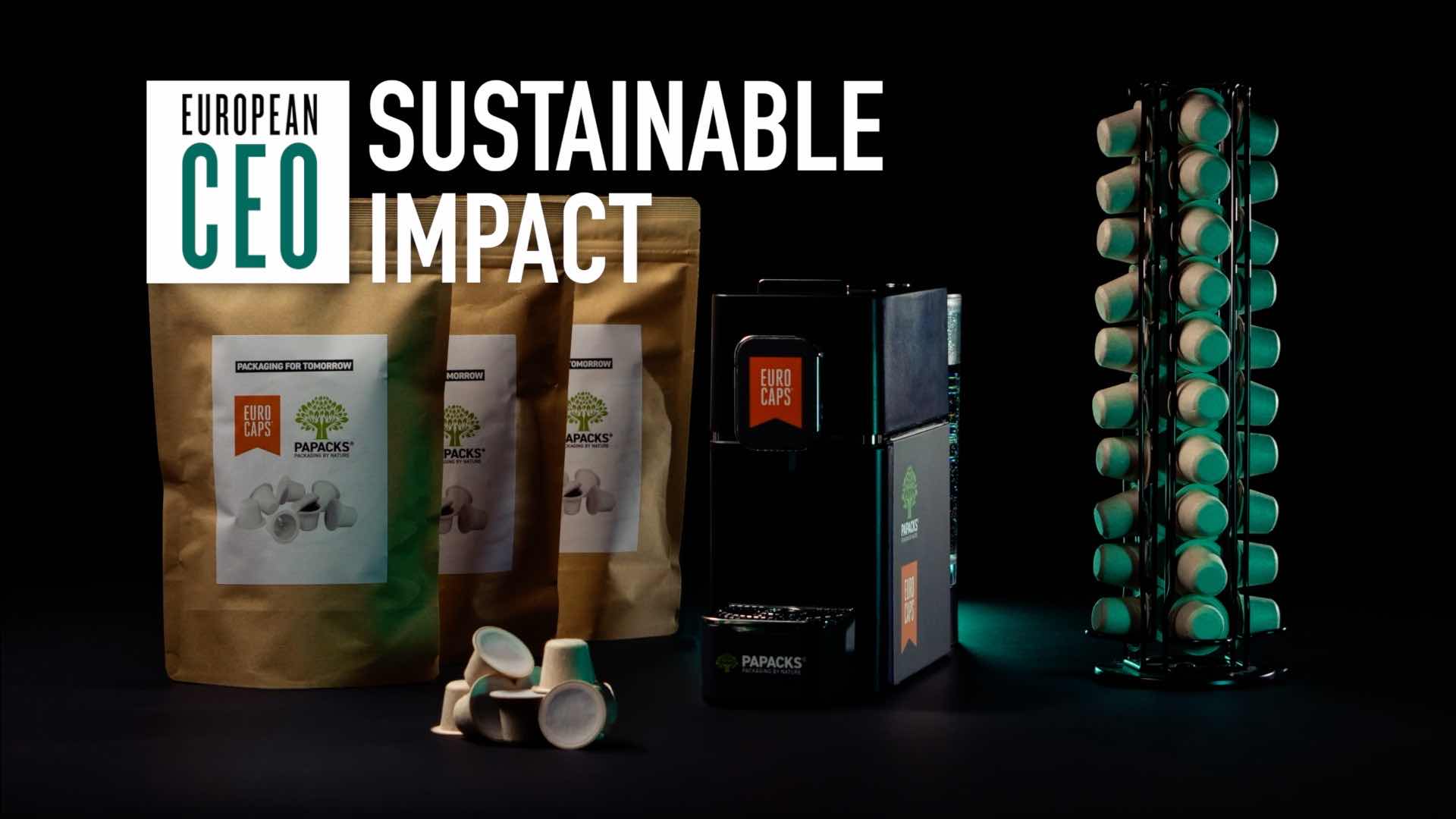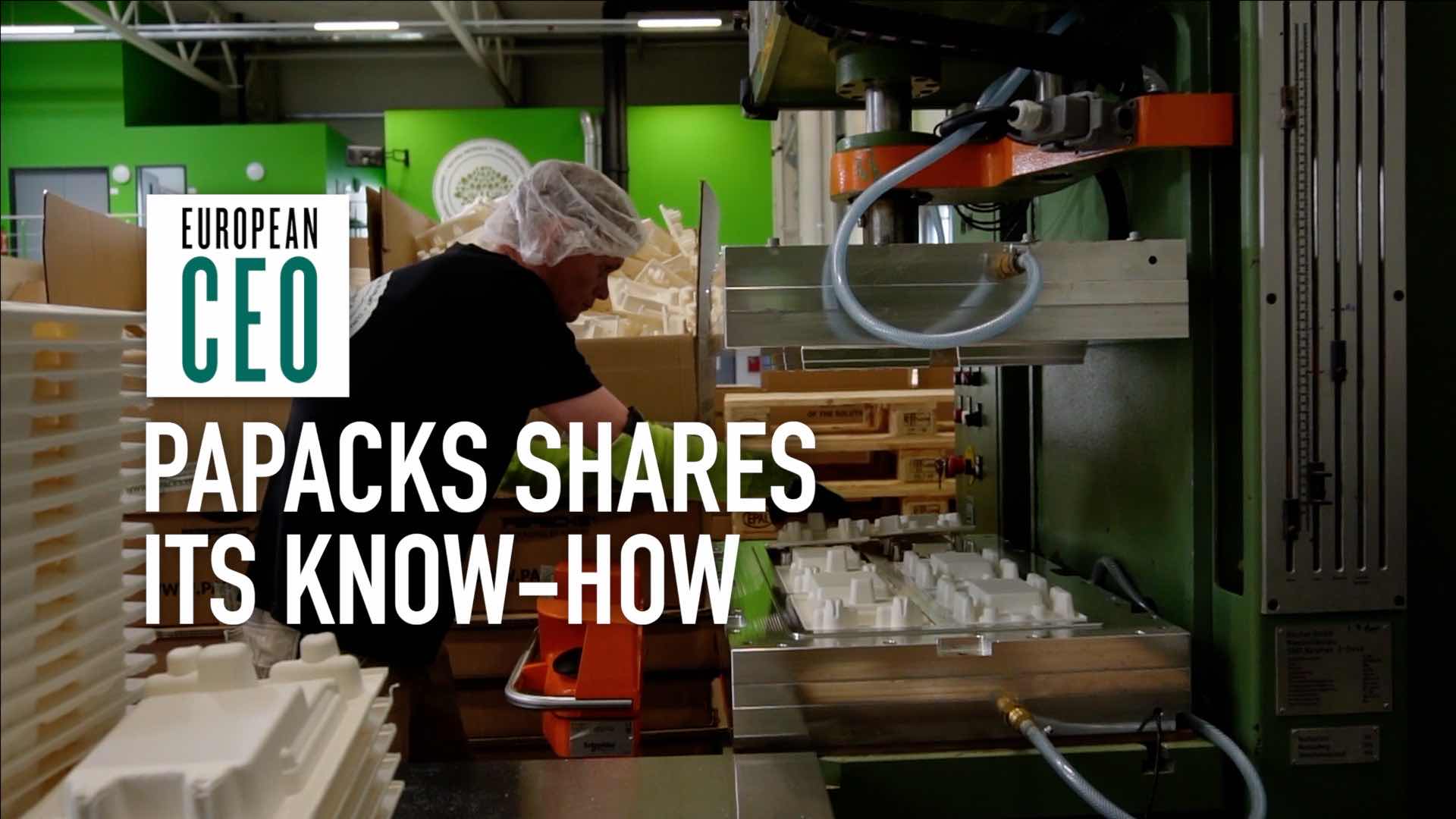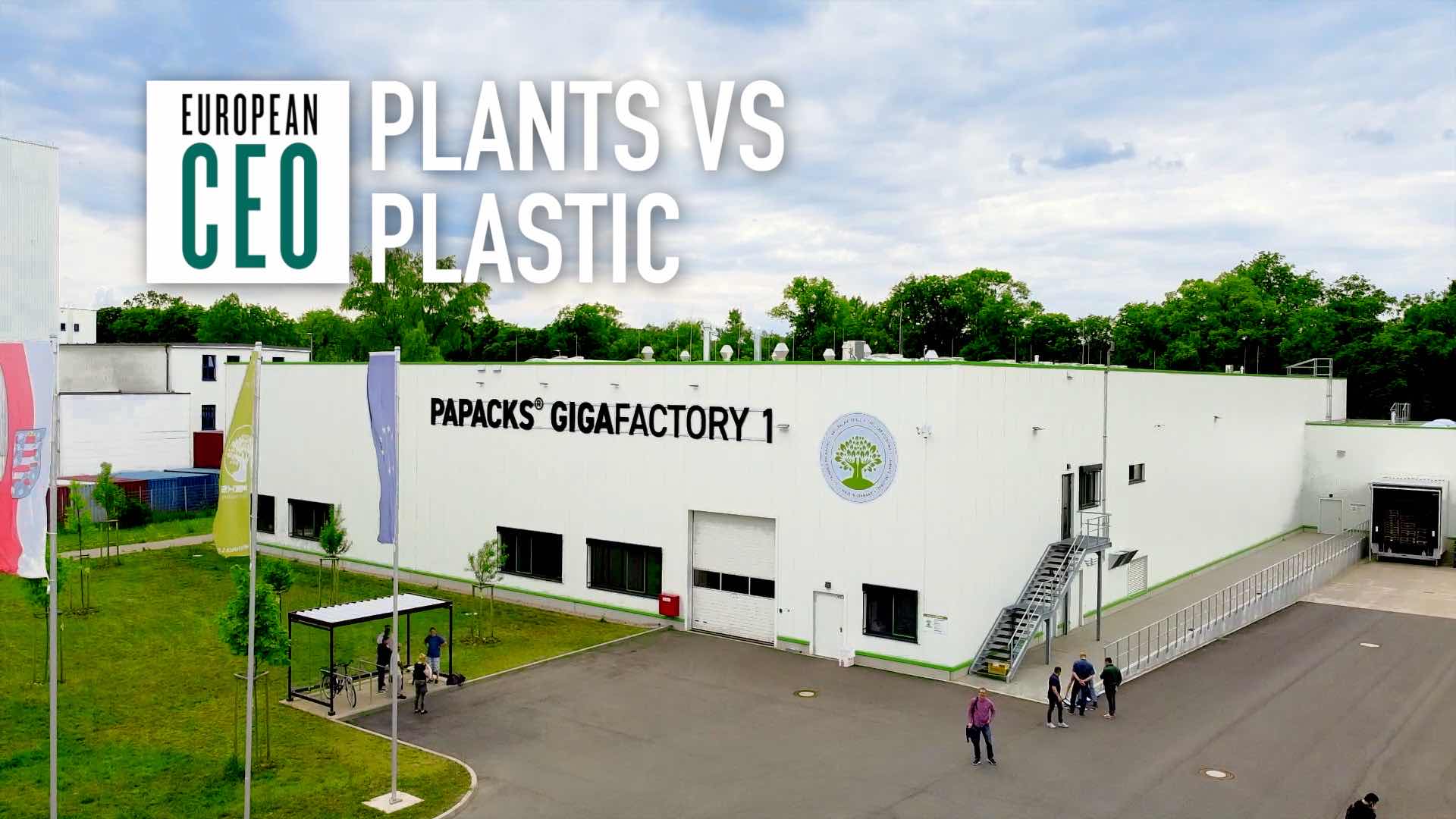Think circularity: Molded fiber is the sustainable future of packaging
From product design to factory power, Papacks' closed-loop thinking is prime example of the circular economy in action
Transcript
Tahsin Dag is founder and CEO of Papacks – the sustainable packaging manufacturer that is using renewable and sustainable molded plant fiber to create products that perfectly match plastic: from water bottles to takeaway containers. Tahsin explains how circularity is baked into the design of all of Papacks’ products – whether it’s ensuring they can fit into paper recycling or bio-compost waste streams, or by collecting transport packaging from its customers, and reusing the materials in fresh products.
European CEO: I’m back with Papacks CEO Tahsin Dag; Tahsin, an important movement in the packaging industry – and indeed as industries as a whole – is towards the circular economy. What does that mean to you?
Tahsin Dag: Circular economy is not just about renewable materials; it’s a whole process.
Circular economy is to produce from the resource, and resource again. And the way how Papacks is thinking about this is, it begins with the design and the right identification of the raw materials. And to always produce products which fit in streams like paper waste stream and organic bio-compost.
So if we use coatings, then it has to fit in them.
The second is very important: if you have a product supplied to your customer, get it back.
So we set up fiber depots very close to our customers. We can shred the material, mix it with long fibers again, and we can produce and produce new materials. And this is a closing loop. And this is very important for the circular economy.
European CEO: Does this kind of circular design put any kind of limitations on the product, or on how your customers use them?
Tahsin Dag: I would say today we have achieved a lot of challenges in the past. But we can produce with our technologies a lot of new shapes of products. Many years ago if you wanted to design a product which is very close to your existing design, it was not really technically producible, because of draft edges, wall thickness of the product. The technology didn’t exist.
But what we do is now very unique, so we can copy now plastic. So if we talk about three dimensional products, shapes, containers, then we don’t have limitations anymore.
The limitations is much more in colouring the products, maybe. So if we talk about the fibers of cellulose, wood or hemp, it absorbs the colouring. So if you are comfortable with that, then we don’t have limitations.
European CEO: And what else is Papacks doing to ensure that your operations are a sustainable and closed loop?
Tahsin Dag: Yes, a lot I would say. So it was very important for me to use solar panels, to use internal water loops, to build very close to decrease the transportation.
And this is why we use this licensing model to have all over the world different fiber depots: to be very close to the production. We have to decrease these transportations between different countries. It doesn’t make sense if you think with circularity, and you think really sustainable.


 Papacks CEO: ‘Working with sustainable impact makes people happy’
Papacks CEO: ‘Working with sustainable impact makes people happy’ Papacks goes global by sharing molded fiber technology in licence model
Papacks goes global by sharing molded fiber technology in licence model How Papacks is replacing single use plastic with molded plant fiber
How Papacks is replacing single use plastic with molded plant fiber